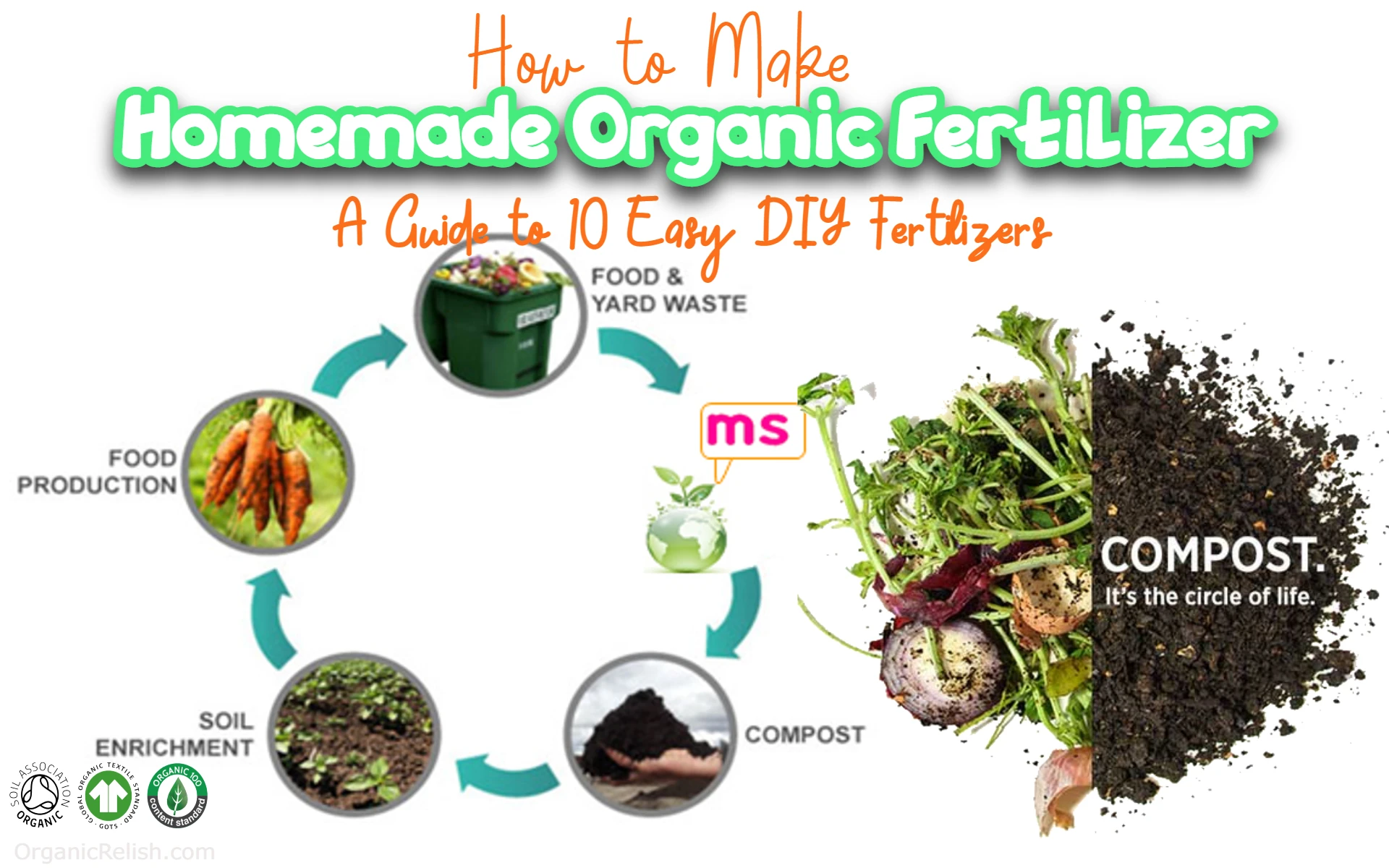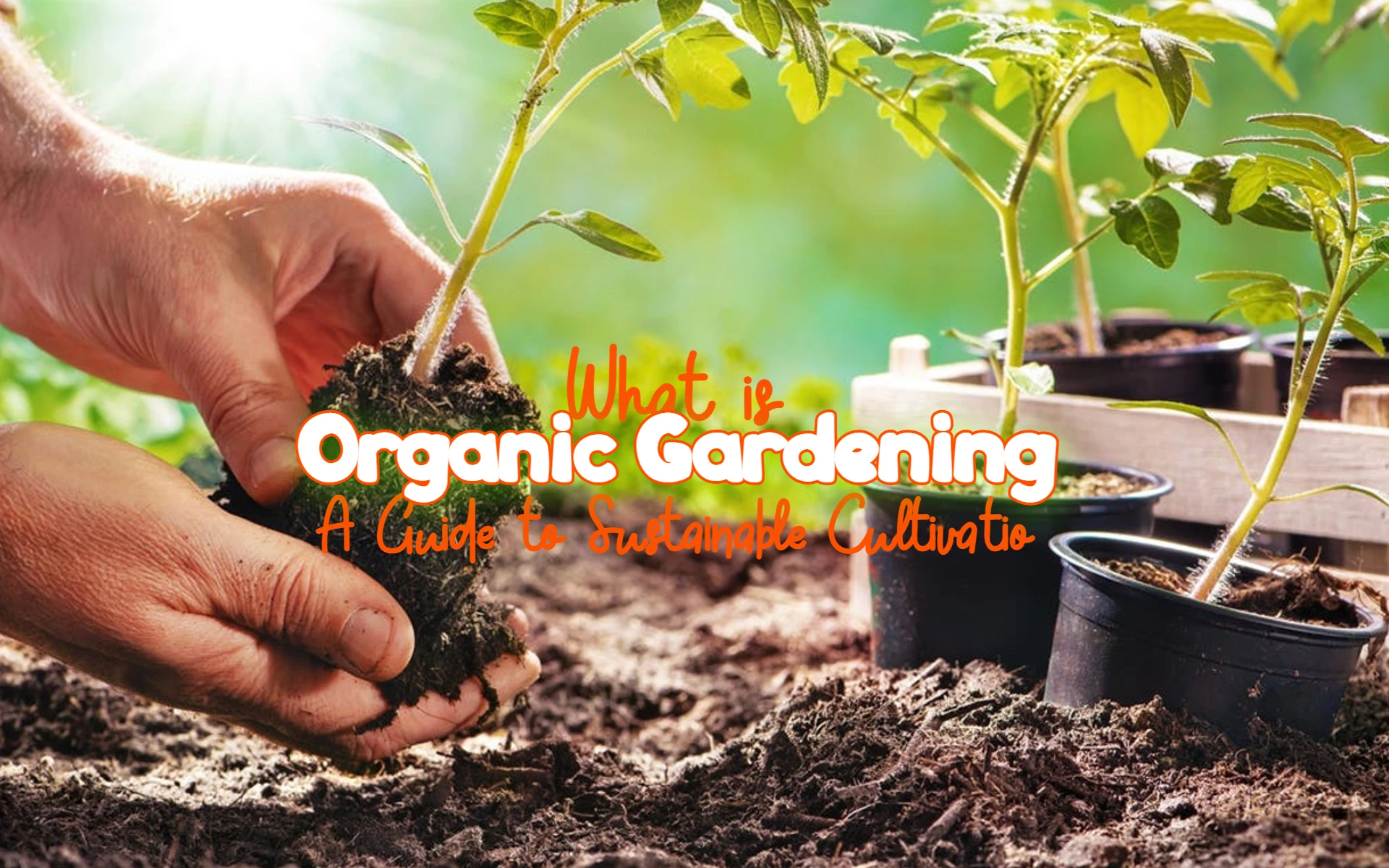How to Make Organic Fertilizer

I am passionate about sharing the many benefits of using natural, organic fertilizers for your plants. The use of synthetic fertilizers can often do more harm than good to your plants, and even the environment. That’s why I’ve made it my mission to promote the use of organic fertilizers made right at home!
There are many reasons to choose homemade organic fertilizers over store-bought synthetic options. For one, they are much gentler on the soil and the environment. Organic fertilizers are made from natural materials, such as plant clippings and seaweed, which break down over time and enrich the soil. Synthetic fertilizers, on the other hand, are often harsh and can even cause soil degradation and harm to local ecosystems.
Furthermore, using organic fertilizers can lead to healthier, stronger plants. Natural materials used in homemade organic fertilizers contain a variety of essential nutrients that plants need to thrive, such as nitrogen, phosphorus, and potassium. By using organic fertilizers, you can give your plants the nutrition they need without having to worry about harsh chemicals or negative impacts on the environment. Whether you’re growing flowers, vegetables, or herbs, homemade organic fertilizers are a simple and effective way to give your plants the best chance of success!
Best 10 Easy Homemade Organic Fertilizers
1. Compost
Making compost is one of the easiest and most effective ways to create a nutrient-rich fertilizer for your plants. Here are the steps to make compost:
- Collect organic materials:
Start by collecting organic materials like leaves, grass clippings, fruit and vegetable scraps, coffee grounds, and eggshells.
- Create layers:
Place these materials in a pile or bin, alternating between brown materials (such as leaves) and green materials (such as grass clippings).
- Water:
Make sure to moisten the pile, but avoid making it too wet as this can slow down the composting process.
- Add air:
Turn the pile occasionally to allow air to circulate, which helps to speed up the composting process.
- Wait:
Composting takes time, usually between 3-6 months, so be patient. You’ll know it’s ready when it’s dark, crumbly, and has a rich, earthy smell.
2. Grass Clippings Fertilizer
If you mow your lawn regularly, you already have a fantastic source of nitrogen fertilizer! Grass clippings contain high levels of nitrogen, making them an easy and quick fertilizer solution.
- Collect the clippings from your lawn after you mow.
- Spread the clippings around the base of your plants.
- Water the clippings in to help them break down.
As the clippings decompose, they will release their nitrogen into the soil, providing your plants with a healthy dose of nutrients.
3. Coffee Grounds
Coffee grounds are a great source of nitrogen and other nutrients, and are easy to use as a fertilizer. Here’s how:
- Collect: Start by collecting coffee grounds from your local coffee shop or save them from your own coffee maker.
- Spread: Spread the coffee grounds around the base of your plants, being careful not to pile them too high.
- Water: Give the area a good soak with water to help the coffee grounds release their nutrients.
4. Eggshells
Eggshells are a great source of calcium and other nutrients, and are easy to use as a fertilizer. Here’s how:
- Save: Start by saving eggshells from your kitchen and crushing them into a fine powder.
- Spread: Spread the eggshell powder around the base of your plants, being careful not to pile it too high.
- Water: Give the area a good soak with water to help the eggshells release their nutrients.
5. Banana Peels
Banana peels are a great source of potassium and other nutrients, and are easy to use as a fertilizer. Here’s how:
- Save: Start by saving the banana peels from your kitchen.
- Chop: Chop the banana peels into small pieces.
- Bury: Bury the chopped banana peels in the soil around your plants.
- Wait: Give the banana peels a few weeks to break down and release their nutrients.
6. Compost Tea
Compost tea is an excellent way to add nutrients to your plants and soil. The tea is made by steeping compost in water for a few days, which allows the microorganisms in the compost to multiply and produce beneficial bacteria that can be used to feed your plants. Here’s how you can make compost tea:
- Fill a 5-gallon bucket with compost.
- Add water to the bucket until it is about three-quarters full.
- Stir the mixture for about 10 minutes to ensure the compost is fully saturated.
- Cover the bucket and let it sit for 3 to 5 days, stirring it occasionally.
- Strain the tea through a fine-mesh sieve and discard the compost.
- Dilute the tea with water to the desired strength and use it to water your plants.
7. Fish Tank Water Fertilizer
Aquarium enthusiasts can make great use of fish tank water as an organic fertilizer for their plants. Fish waste and uneaten food are a rich source of nitrogen, phosphorus, and other essential plant nutrients.
Here’s how to use fish tank water as a fertilizer:
- First, you’ll need to let the water sit for a few days to allow any harmful chemicals to dissipate.
- Once the water has cleared, use a watering can to apply it directly to the soil around your plants.
- Be careful not to use too much fish tank water at once, as this can lead to an accumulation of harmful chemicals in the soil.
- Instead, use a diluted solution and apply it every two weeks or so to keep your plants well-nourished.
8. Comfrey Fertilizer
Comfrey is a plant that’s well-known for its high levels of nitrogen, potassium, and other important nutrients that plants need to grow. To create a comfrey fertilizer, you’ll need a few weeks, some comfrey leaves, and a bucket of water.
- Chop up some comfrey leaves into small pieces.
- Place the chopped leaves into a bucket of water.
- Let the leaves soak for a few weeks.
- Strain the mixture and use the water to water your plants.
Comfrey fertilizer is a great way to provide your plants with essential nutrients and help them grow strong and healthy.
9. Seaweed Fertilizer
Seaweed is another great organic fertilizer option. It contains high levels of potassium, iron, and other trace minerals that are vital for your plants’ growth.
- Collect a handful of seaweed from the beach.
- Wash the seaweed to remove any sand or debris.
- Place the seaweed in a bucket of water.
- Let the seaweed soak for a few days.
- Strain the mixture and use the water to water your plants.
Seaweed fertilizer is an excellent way to provide your plants with a dose of important minerals that will help them grow and thrive.
10. Bone Meal Fertilizer
Bone meal is a fantastic source of phosphorus, which is critical for strong root development and flower production. To create this fertilizer, all you’ll need is bone meal and water.
- Sprinkle bone meal around the base of your plants.
- Water the bone meal in.
As the bone meal breaks down over time, it will release its phosphorus into the soil, providing your plants with a healthy dose of nutrients that will help them grow and flower.
I hope these 10 organic fertilizers help your plants grow healthy and strong! Happy gardening!
FAQs
Organic fertilizers are beneficial for plants because they provide essential nutrients in a slow-release form, improving the soil structure and fertility. Additionally, using organic fertilizers helps reduce the risk of harmful chemical runoff into the environment, making them a more sustainable option for gardening and agriculture.
Epsom salt is commonly used in gardening as a source of magnesium, which is essential for healthy plant growth. Magnesium is involved in many of the plant’s critical processes, such as photosynthesis and the production of chlorophyll.
Grass clippings can be used in gardening as a source of nitrogen. Nitrogen is an essential nutrient that helps promote healthy foliage growth, and grass clippings can provide a quick and easy source of this nutrient when used as a fertilizer.
Comfrey is a plant that’s often used in gardening as a fertilizer due to its high levels of nitrogen, potassium, and other essential nutrients. By using comfrey as a fertilizer, gardeners can improve soil fertility and provide their plants with the nutrients they need to thrive.
Seaweed is commonly used in gardening as a fertilizer due to its high levels of potassium, iron, and other trace minerals that are essential for healthy plant growth. By using seaweed as a fertilizer, gardeners can improve soil fertility and provide their plants with the minerals they need to thrive.
Read More:
